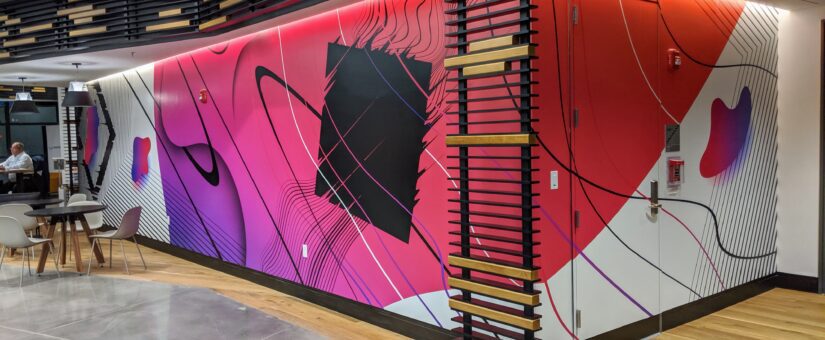
The Complete Guide to Wide Format Printing: Everything You Need to Know
- Posted by TVadm
- On May 31, 2024
- 0 Comments
Wide format printing has become an essential tool for businesses, marketers, trade show promoters, graphic designers, and small businesses striving to make a significant impact. This technology is versatile, allowing for high-quality prints that can be used in various applications, from banners and posters to vehicle wraps and store displays. In this comprehensive guide, we will delve deeply into the world of wide format printing, exploring its benefits, applications, and how to choose the right equipment for your needs.
What is Wide Format Printing?
Wide format printing, also known as large format printing, refers to the production of prints larger than the standard printing sizes, typically ranging from 18 inches to 100 inches in width. This type of printing uses specialized equipment to produce high-resolution images on a variety of media types, including paper, vinyl, fabric, and canvas.
Benefits of Wide Format Printing
Versatility – Wide format printing is incredibly versatile, accommodating a broad range of media types and applications. From indoor posters and outdoor banners to vehicle wraps and trade show displays, the possibilities are nearly endless.
High Quality – Modern wide format printers offer exceptional print quality with vibrant colors and sharp details, ensuring that your message stands out. These printers use advanced ink technologies and precise color management systems to produce professional-grade results.
Cost-Effective for Large Prints – For large-scale prints, wide format printing is often more cost-effective than traditional printing methods. It allows for the production of large prints in a single piece, eliminating the need for piecing together smaller prints, which can be both time-consuming and costly.
Quick Turnaround – Wide format printing can significantly reduce production times. This is particularly beneficial for businesses with tight deadlines, such as event organizers and marketers who need promotional materials quickly.
Applications of Wide Format Printing
Advertising and Marketing – Wide format printing is ideal for creating eye-catching advertising and marketing materials, such as billboards, banners, posters, and window graphics. These materials can help businesses attract attention and convey their messages effectively.
Vehicle Wraps – Another example of an eye-catching advertisement/marketing material that wide format printing is used for is vehicle wraps. A vehicle wrap can help businesses attract attention and convey their message on the go!
Trade Shows and Events – Trade show promoters and event organizers can utilize wide format printing for booth displays, backdrops, table covers, and promotional signage. High-quality prints can help create a professional and engaging environment that draws in attendees.
Retail and Point of Sale – Retailers can use wide format printing to produce vibrant point-of-sale displays, in-store signage, and window graphics. These prints can enhance the shopping experience and drive sales by highlighting promotions and new products.
Architecture and Engineering – Architects and engineers can benefit from wide format printing for producing detailed blueprints, schematics, and renderings. The high resolution and accuracy of wide format prints ensure that every detail is captured with precision.
Custom Art and Décor – Graphic designers and artists can use wide format printing to create custom art prints, canvas prints, and wall murals. This allows them to offer unique, large-scale pieces to their clients and customers.
Best Practices for Wide Format Printing
To achieve the best results with wide format printing, follow these best practices:
File Preparation – Ensure your files are correctly prepared for printing. Use high-resolution images, typically 100-150 DPI, to avoid pixelation. Convert your files to the appropriate color profile (e.g., CMYK for print) and check for any potential issues such as color shifts or missing fonts.
Color Management – Implement a color management system to maintain consistent and accurate colors across different media and printers. Calibrate your monitors and printers regularly to ensure color accuracy.
Media Handling – Handle media carefully to avoid damage or contamination. Store media in a clean, dry environment and follow the manufacturer’s guidelines for loading and handling.
Proofing – Before printing a large batch, produce a proof to check for any issues such as color accuracy, alignment, or resolution. This allows you to make necessary adjustments before committing to a full print run.
Wide format printing offers businesses, marketers, trade show promoters, graphic designers, and small businesses a powerful tool to create impactful and high-quality prints. By understanding the benefits, applications, and best practices associated with wide format printing, you can make informed decisions and leverage this technology to its fullest potential. Whether you’re looking to produce eye-catching marketing materials, enhance your retail space, or create custom art, wide format printing can help you achieve your goals with stunning results.



0 Comments